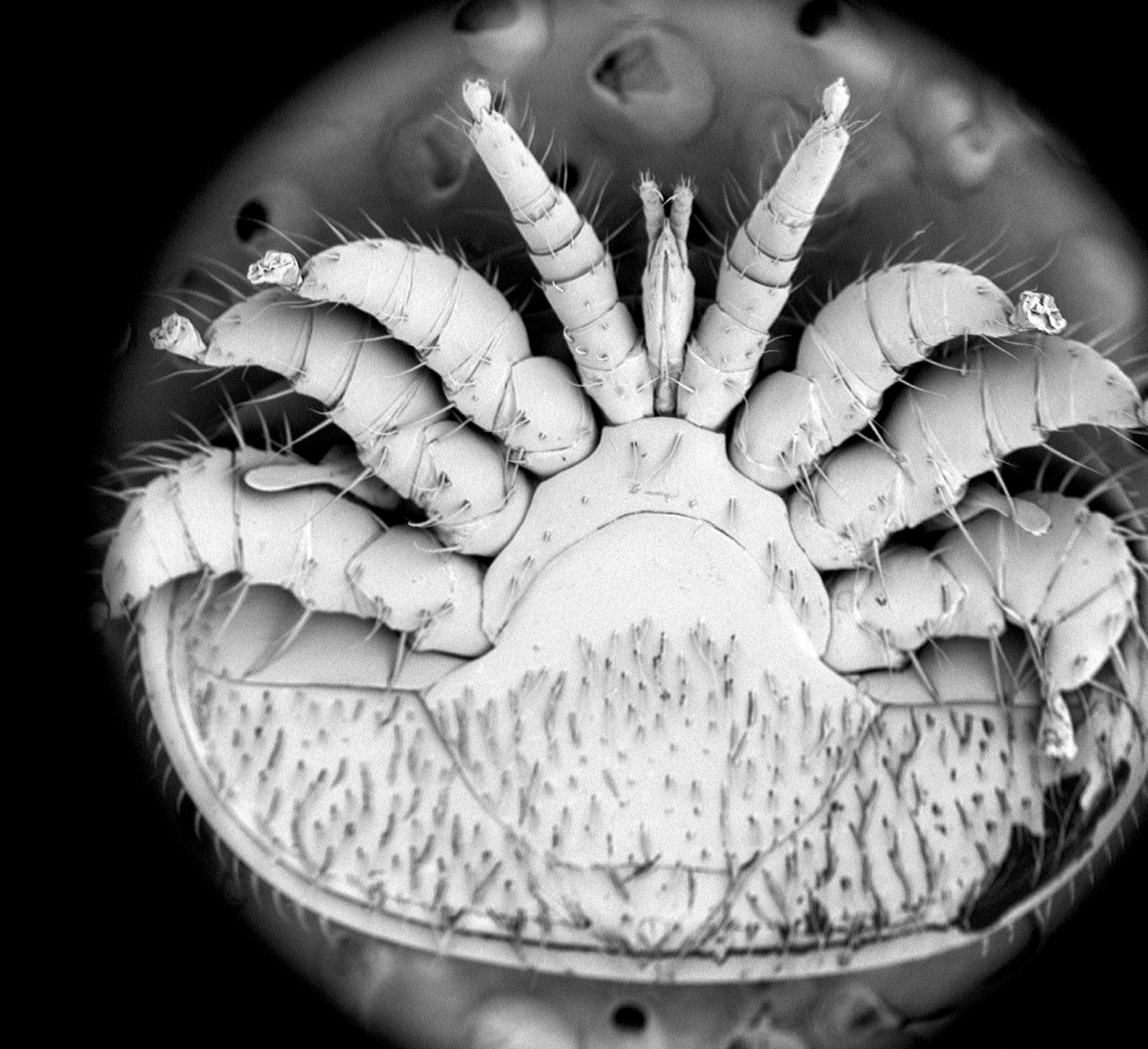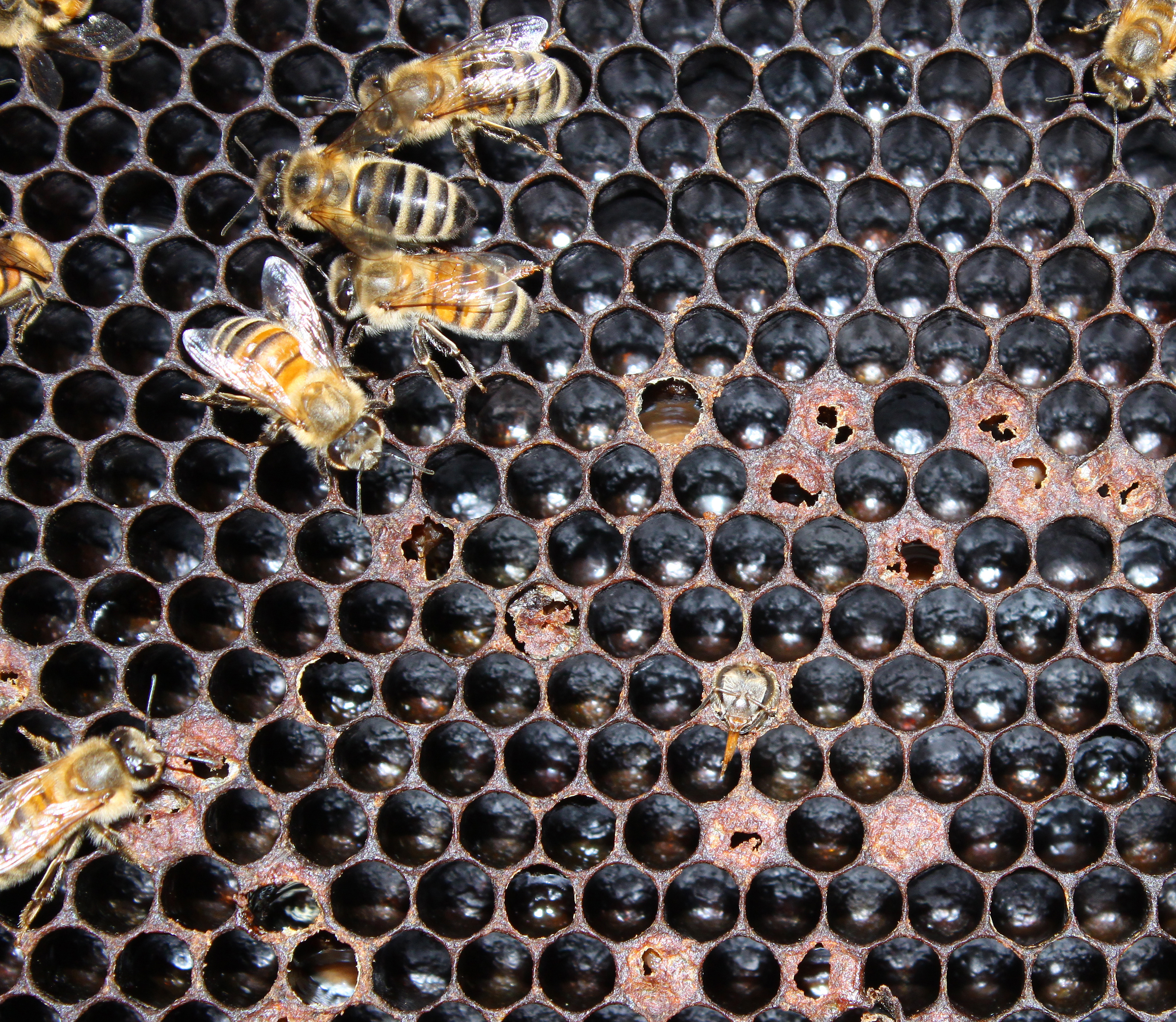.jpg)
Resources for Beekeepers
Pesticide Monitoring
Since 2021, we have partnered with beekeepers throughout the state to inform our understanding of chemical stressors to honey bees and residues present throughout our environment. Each year, Vermont beekeepers have the opportunity to join this community science project. Get in touch with us to learn more.
UBeeO Factsheets
UBeeO is a novel tool that queen producers can use to improve pest and disease-resistant qualities of their honey bee stock. Since 2022, the Vermont Bee Lab has partnered with queen producers in the state to test UBeeO. We developed two factsheets summarizing this work and what we have learned about this technology.
Honey Bee Suppliers
Looking to buy bees but don’t know where to start? We surveyed local bee suppliers to help you with your search! This resource compiles information from producers and suppliers in your area and includes details on: the bees they offer, how bee stock is selected, prices, when to place your order, and more! **Note, many suppliers begin selling as early as December!**
Varroa
Varroa mites are ectoparasites that feed off the fat bodies and hemolymph of bees, suppress the immune system, and vector viruses. Introduced to North America from Asia in the 1980s, Varroa mites are considered the most deleterious pests to modern beekeeping. Methods to control mites include chemical treatments, practices that interrupt the mite's life cycle, and utilizing mite resistant honey bee genetics.

- Honey bee health coalition offers a Varroa management guide and series of demonstration videos. Unsure about what kind of treatment to use for mites? Check out their decision tool which will walk you through the decisions you need to make to determine the best management strategy.
- The Beekeeper Tech Team at Cornell lists strategies of employing integrated pest management (IPM) to control varroa mites in your hive, including monitoring programs, methods to minimize treatments such as cultural, chemical, and genetic practices, and frequently asked questions.
- Michigan State University provides a varroa management plan for beekeepers, including general principles and examples on preparing your colony for mite infestation, monitoring techniques, and the pros and cons of varroa management tools to determine which program best suits your apiary needs.
Nosema
Nosema is a prevalent, microsporidian parasite, derived from two different species, that resides in the digestive tract of honey bees and causes dysentery, weakened survival, and reduced honey yield. The fungal spores spread through grooming, food sharing, and cleaning contaminated brood.

- Cornell provides information on the identification and control of Nosema in New York, providing a step by step approach to diagnosing Nosema and using microscopy to detect and measure spore count.
- The Ontario Beekeepers Association offers a comprehensive brochure on Nosema which provides an overview of both species, their activity patterns and effects on colonies, and common symptoms and solutions for beekeepers.
Foulbrood
American Foulbrood is the most serious brood disease that inflicts honey bee colonies, causing colony collapse and readily spreading to other colonies in the apiary. The spore-forming bacteria kills larvae in their capped cells, which often appear sunken and discolored. Spores can linger for decades if equipment is not eradicated properly. American Foulbrood is a reportable disease. If you suspect AFB, please contact Brooke Decker, the state bee inspector. European Foulbrood is less fatal than the former. The non-spore forming bacteria kills larvae before they are capped. It is common in early spring and may even clear up if left untreated.

Rob Snyder, Bee Informed Partnership
- Honey Bee Health Coalition offers a step by step guidebook on mitigating and treating foulbrood according to your state regulations, and provides information on proper veterinary care to reduce antibiotic use. The photographs depicted can help you visualize and confirm foulbrood cases in your colonies.
- Unconfident of your ability to diagnose Foulbrood strains? The pollinator network at Cornell provides a useful video tutorial on rope tests and other distinctive signs and symptoms of American versus European Foulbrood.
Other Useful Resources
- Vermont Apiary Inspection Program: Brooke Decker serves at the Pollinator Health Specialist and State Apiculturist. For information about inspections and state regulations, visit the state's apiary program webpage or contact Brooke Decker directly (802-272-6688, [email protected])
- Diagnostic Services: The Vermont Bee Lab offers diagnostic services to all Vermont beekeepers free of charge. Video instruction on sample collection, frequently asked questions, and submission forms are available online. Simply select your disease test request, input your apiary information, and deliver your sample to one of our multiple drop box locations or ship USPS.
- Bee Veterinarian: Treating Foulbrood requires antibiotic prescriptions written by licensed bee veterinarians. Find your local bee vet in any state using the Honey Bee Veterinary Consortium’s locator module.
- Deadout Key: This guide composed by NY Bee Wellness allows you to interpret the symptoms of a dead-out colony, listing common reasons, preventative measures, and actions to take upon discovering a dead-out depending on the cause.
- Pest Management Tutorials: University of Guelph offers a series of video tutorials about varroa population dynamics and management techniques such as using sticky boards, as well as demonstrations on fumigating for nosema, and the varroa alcohol wash sampling technique.
- Global Pest and Pathogen Statistics: Researchers at the University of Florida provide a detailed list of pests and pathogens known to inflict honey bees, including a map of the disease prevalence around the world as well as a table of resources and peer reviewed articles that support their findings for each species.
- Bee Health Education: Dr. Humberto Bonchritiani’s YouTube channel Inside the Hive TV takes you into the world of bees, providing educational videos on an array of bee related topics including beekeeping, pests and diseases, conservation, and recent technological advances. Check it out!
- USDA-APHIS National Honey Bee Survey: The NHBS is a nationwide effort to gather baseline data on bee diseases and pathogens. Check out data collected from Vermont apiaries and compare across other states.
- Local Bee Suppliers: Looking to buy bees? Check out this resource for information we gathered from local bee suppliers.
- Submit a Mite Count: Participate in our mite count citizen science project by submitting your data!